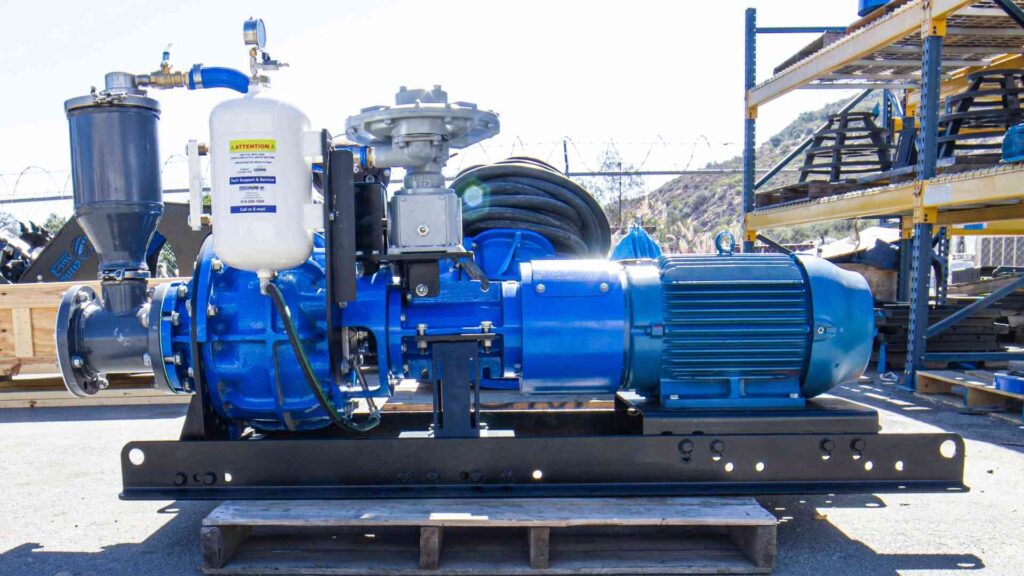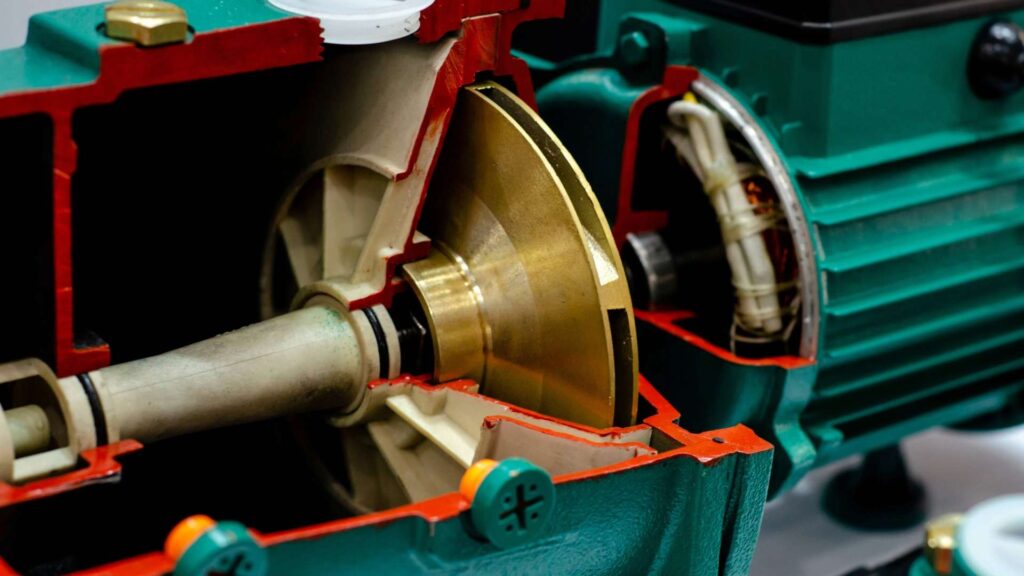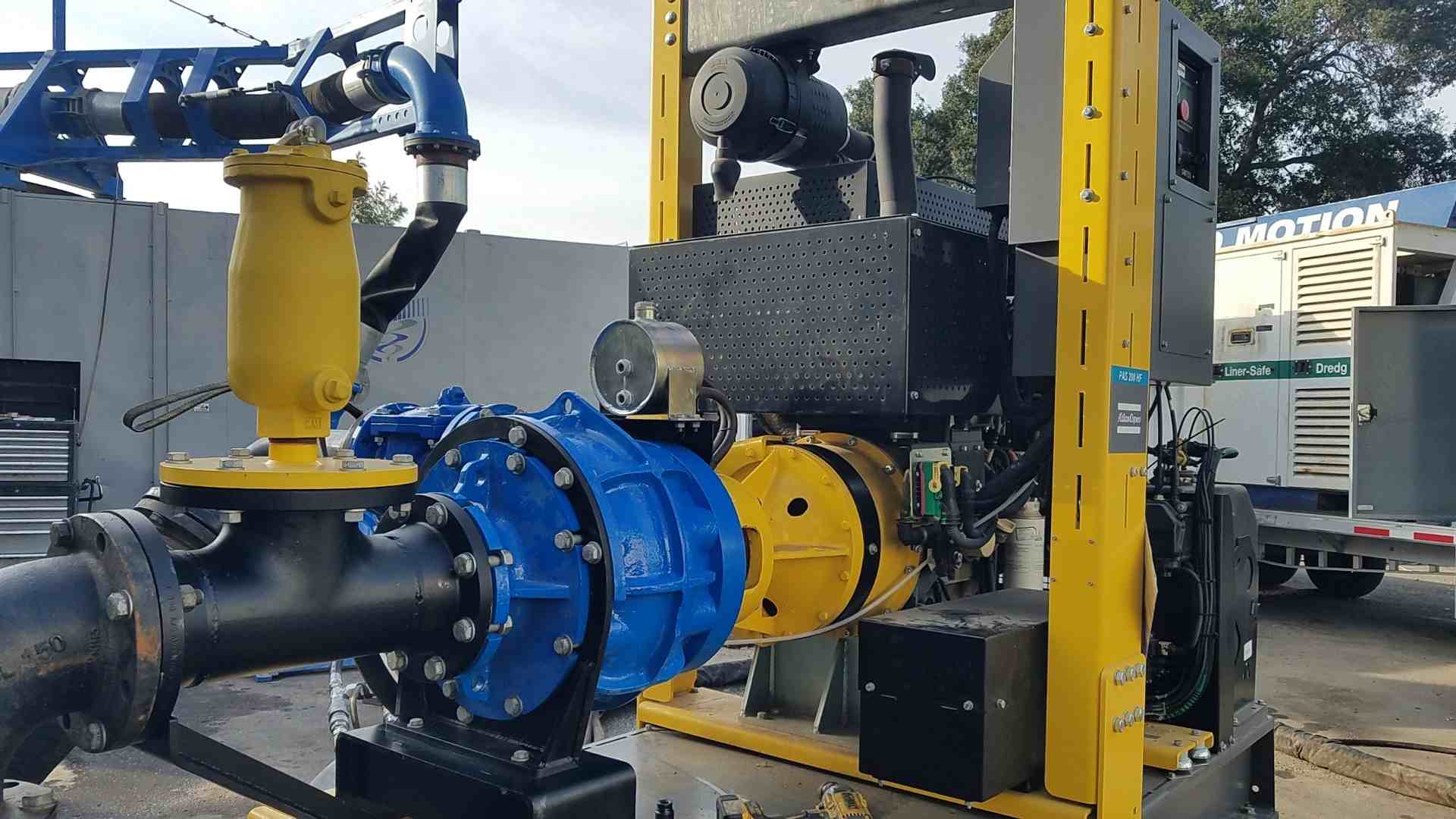Selecting the right materials for self priming pumps is crucial when dealing with demanding fluid environments. Whether in mining, construction, chemical processing, or wastewater treatment, the performance, reliability, and longevity of self priming pumps largely depend on materials that match the application’s specific challenges. From self priming trash pumps handling solids to self priming centrifugal pumps built for chemical resistance, making the right material choice is key to optimal operation.
In this article, we explore the essential considerations and top material options for building long-lasting and efficient self priming pumps designed for rugged and corrosive conditions.
Understanding the Role of Self Priming Pumps

Self priming pumps are designed to automatically evacuate air from the suction line and begin pumping without external assistance. This feature makes them indispensable in remote or field-based operations where manual priming isn’t feasible.
However, these pumps often operate under harsh conditions, including exposure to abrasive solids like sand and gravel or corrosive substances like acids and salts. In such environments, improper material selection can lead to premature pump wear, unplanned maintenance, and costly downtime. For both self priming trash pumps and self priming centrifugal pumps, material compatibility with the fluid being pumped is non-negotiable for long-term success.
Abrasive vs. Corrosive: Why Material Matters
To choose the best materials for self priming pumps, it’s important to distinguish between abrasive and corrosive conditions. While these challenges may coexist in many environments, they affect pump components differently. Using the wrong material can lead to rapid deterioration, inefficient performance, and total pump failure. That’s why operators must carefully match materials to fluid characteristics,especially when working with self priming trash pumps or self priming centrifugal pumps.
Materials for Abrasive Environments
Abrasive environments feature fluids that contain hard solids such as sand, grit, coal, or sludge. These particles cause physical wear on internal components like impellers, wear plates, and casings. This constant erosion can degrade pump efficiency, increase leakage, and eventually render the pump inoperable.
Self priming pumps used in abrasive applications must be made from wear-resistant materials. Common choices include high-chrome iron, hardened steel, and other abrasion-tolerant alloys. These materials provide enhanced protection against friction and impact.
Self priming trash pumps are particularly suited for these environments. Their design accommodates large solids and slurry without clogging, making them ideal for mining slurry handling, construction site dewatering, and dredging. These rugged self priming pumps excel in heavy-duty settings where durability is paramount.
Even self priming centrifugal pumps, which are more commonly used for cleaner fluids, can be configured to manage mildly abrasive fluids. This is achieved through components like oversized wear rings, ceramic coatings, or replaceable liners that reduce internal wear over time.
Materials for Corrosive Environments
Corrosive environments present a different hazard: chemical attack. Fluids like seawater, acids, alkalis, and industrial chemicals react with standard metals, leading to pitting, rusting, and structural damage.
In these applications, self priming pumps should be constructed using corrosion-resistant materials. Options include 316 stainless steel, bronze, PVDF, polypropylene, and specialized coatings. These materials resist chemical degradation and extend the operational life of the pump.
Self priming centrifugal pumps are frequently used in chemical plants, marine applications, and food processing facilities because they can be made entirely from clean, corrosion-proof materials. These self priming pumps help maintain product integrity while withstanding aggressive fluids.
Meanwhile, self priming trash pumps used in wastewater treatment or stormwater systems often encounter corrosive contaminants. To handle both solids and corrosives, these pumps are built with plastic-lined or stainless steel interiors, providing both strength and chemical protection.
Dual Threat: Abrasive and Corrosive Conditions
In many real-world cases, self priming pumps must operate in fluids that are both abrasive and corrosive. This is common in industries like mining and marine dredging, where fluids may contain sand and saltwater or mineral-rich slurries. Standard materials like cast iron are quickly destroyed in these conditions, making advanced materials essential.
Self priming trash pumps built for dual-resistance scenarios typically feature high-chrome impellers and composite or stainless steel casings, combining durability with chemical protection. Their ability to manage solids while resisting corrosion makes them a top choice for challenging environments.
High-performance centrifugal pumps can also be tailored for dual-threat operations. Using modular designs and hybrid materials,such as combining ceramic coatings with plastic or stainless-steel housings,these self priming pumps can efficiently handle mixed conditions.
Choosing the right pump goes beyond fluid type; it also involves analyzing temperature, pH, flow velocity, and concentration of solids or chemicals. Even slight shifts in these parameters can impact the wear rate and chemical compatibility of materials. Expert evaluation is essential when deploying self priming trash pumps or centrifugal pumps in demanding environments.
Common Materials Used in Self Priming Pumps

Choosing the right material for self priming pumps is essential for ensuring durability, efficiency, and resistance to environmental wear and tear. Depending on the operating conditions, particularly in abrasive or corrosive environments, material selection can directly affect the performance and longevity of both trash pumps and self priming centrifugal pumps. Below are some of the most commonly used materials and how they align with specific pumping applications.
1. Cast Iron
Cast iron is one of the most widely used materials in the construction of self priming centrifugal pumps, especially for general-purpose applications involving clean or slightly contaminated water. It offers a cost-effective solution for tasks in municipal water systems, agriculture, and light industrial operations.
Due to its moderate abrasion resistance, cast iron is suitable for self priming pumps handling fluids with small quantities of non-corrosive solids, such as silt or fine sand. This makes it a reliable choice for self priming trash pumps used in construction dewatering, tank drainage, and groundwater transfer.
However, cast iron is highly susceptible to corrosion, particularly in environments containing acids, salts, or aggressive chemicals. Over time, corrosion can degrade pump components, reduce efficiency, and lead to failure. As a result, cast iron is not ideal for harsh chemical or marine applications. Nonetheless, for budget-conscious projects in non-corrosive environments, cast iron self priming pumps provide dependable service and solid performance.
2. Stainless Steel
Stainless steel is highly favored for self priming pumps operating in corrosive conditions. Especially in its 316-grade form, stainless steel offers excellent resistance to saltwater, chlorinated water, and aggressive industrial fluids.
In self priming centrifugal pumps, stainless steel is often used not only for the casing but also for internal components such as impellers, shafts, and seals. This material helps ensure corrosion resistance across all wetted parts, which is particularly critical in food processing, chemical plants, marine systems, and clean water applications.
While stainless steel self priming pumps come at a higher initial cost than cast iron, their longevity and reduced maintenance demands make them more cost-effective in the long run. When chemical exposure is a concern, trash pumps made with stainless steel components offer reliable, long-lasting performance, even in semi-solid or dirty fluid conditions.
3. High-Chrome Alloys
For extreme abrasion, high-chrome alloys are the preferred choice in self priming pumps. These materials are specifically engineered for high-wear environments like mining operations, dredging projects, and concrete slurry pumping.
High-chrome white iron, with chromium content ranging from 20% to 30%, provides superior hardness and wear resistance. Components such as impellers, volutes, and wear plates in trash pumps made from high-chrome alloys can withstand continuous exposure to coarse, gritty particles without rapid degradation.
Although high-chrome materials lack the corrosion resistance of stainless steel, they perform well in applications where abrasive wear is the dominant challenge. In certain cases, they are also used in centrifugal pumps when minor corrosion is present but abrasion remains the primary concern.
For industries that operate in rugged, solid-laden environments, high-chrome self priming pumps minimize downtime and maximize productivity.
4. Bronze and Marine Alloys
Bronze and its variants, including nickel-aluminum-bronze, are widely used in centrifugal pumps designed for marine or coastal environments. These alloys offer an excellent balance of corrosion resistance and mechanical strength, making them ideal for saltwater exposure.
In marine systems, dockside dewatering, and shipboard operations, pumps with bronze housings and impellers resist not only salt-induced corrosion but also biofouling and cavitation. Nickel-aluminum-bronze alloys, in particular, are known for their enhanced toughness and suitability for higher-pressure marine applications.
Trash pumps in seawater or brackish applications also benefit from bronze components, especially when both corrosion and mild abrasion are present. While more expensive than cast iron, bronze offers long-term reliability and is an effective middle ground between strength, resistance, and cost.
5. Thermoplastics and Composites
In environments dominated by harsh chemicals, thermoplastics and composite materials become the materials of choice for self priming pumps. Options like polypropylene, PVDF, and fiberglass-reinforced plastic (FRP) are highly resistant to acids, alkalis, solvents, and corrosive wastewater.
These lightweight, non-metallic materials do not rust, are non-conductive, and provide excellent chemical compatibility. As a result, trash pumps and centrifugal pumps built with thermoplastics are ideal for chemical processing, plating operations, and aggressive wastewater applications.
However, plastic materials typically offer lower mechanical strength compared to metal. This limits their use in highly abrasive or high-temperature environments. In such cases, these pumps are best used for low-viscosity liquids and require proper screening of solids to avoid mechanical wear.
For portable or lightweight trash pumps, thermoplastics also offer the advantage of easy transport and installation. In situations where corrosion protection outweighs abrasion resistance, plastic-based centrifugal pumps deliver excellent service life and safety.
Matching Materials to Application
Selecting the appropriate materials for self priming pumps depends entirely on the environment in which they operate. Different fluids present varying levels of abrasion, corrosion, and temperature stress,making material choice critical to performance and lifespan. Below is a quick-reference guide to help match materials with specific conditions:
| Condition | Recommended Material | Pump Type |
|---|---|---|
| Clean or slightly dirty water | Cast Iron | Self priming centrifugal pumps |
| Salty or brackish water | Bronze or 316 Stainless Steel | Self priming centrifugal pumps |
| Corrosive chemicals | PVDF, Polypropylene, or 316 SS | Self priming trash pumps |
| Abrasive slurry | High-Chrome Iron | Self priming trash pumps |
| Acidic wastewater | 316 Stainless Steel or Plastics | Self priming pumps |
| High solids (construction dewatering) | Cast Iron or Chrome Iron | Self priming trash pumps |
Before finalizing material selections for your pumps, it’s essential to analyze fluid characteristics like pH, temperature, chemical concentration, and the type and size of suspended solids.
Pump Components That Matter
Not all components in self priming pumps face the same challenges. Optimizing material selection for each individual part helps balance durability, cost, and performance,especially in complex environments. Here’s how different components benefit from specific material choices:
- Impellers: Frequently exposed to erosion, they are typically made of high-chrome iron, bronze, or plastics depending on the application’s abrasive or corrosive nature.
- Casings: These must endure internal pressure and fluid exposure. Cast iron is cost-effective for clean fluids, while stainless steel offers protection in corrosive environments.
- Wear Plates: Designed to take the brunt of erosion, wear plates protect the casing and are often made from hardened materials like chrome iron or composite surfaces.
- Shafts and Seals: Strength and corrosion resistance are crucial here. Stainless steel shafts combined with mechanical seals provide durability in both self priming trash pumps and self priming centrifugal pumps.
Customizing at the component level offers flexibility in configuring pumps for any specific challenge,whether that’s chemical compatibility, abrasion resistance, or cost control.
Key Considerations Before Choosing Materials
Before investing in self priming pumps, it’s important to assess the following:
- Fluid Properties
Know the fluid’s temperature, pH, abrasiveness, and chemical composition. This ensures compatibility with selected materials and avoids premature degradation. - Solids Content
Applications with heavy solids,like slurry or sludge,demand highly abrasion-resistant materials such as high-chrome iron, especially for trash pumps. - Corrosion Risk
For environments exposed to saltwater, acids, or industrial chemicals, corrosion-resistant materials like 316 stainless steel or engineered plastics are essential. - Maintenance Frequency
More durable materials reduce maintenance intervals and avoid costly unplanned downtime. - Cost vs. Lifespan
While materials like stainless steel or high-chrome alloys involve a higher upfront cost, they offer greater returns by increasing operational lifespan and reducing failure rates.
A properly specified self priming centrifugal pump or self priming trash pump may require more initial investment,but it pays off in demanding environments with reduced breakdowns and lower total cost of ownership.
Looking Ahead
In abrasive and corrosive environments, material selection isn’t a luxury,it’s a necessity. Whether you’re deploying self priming centrifugal pumps for chemical transfer or self priming trash pumps for dewatering or slurry removal, understanding your application’s unique conditions is key.
Choosing the right materials for your self priming pumps means fewer breakdowns, longer service life, and more efficient operation. It ensures your system performs reliably, even under extreme wear or chemical exposure,protecting your investment and keeping operations moving forward
